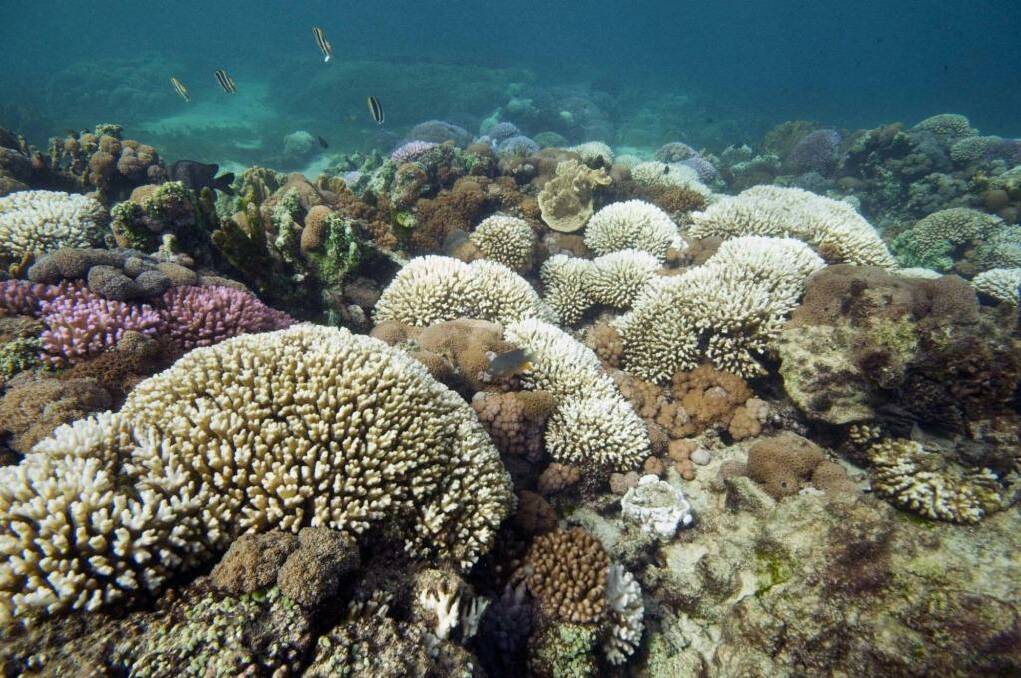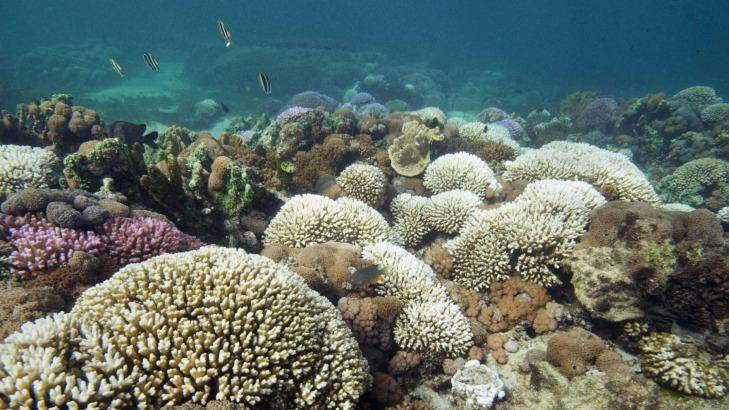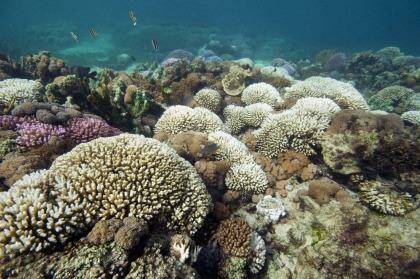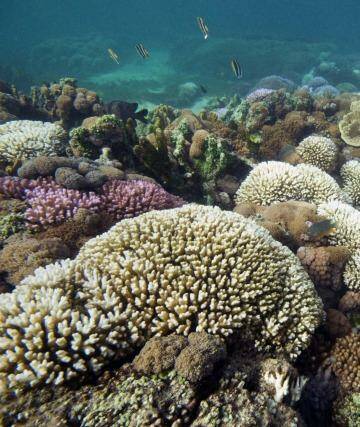



The threat of major coral bleaching in the Great Barrier Reef looks to be receding with the onset of stormier weather including the formation of the first tropical cyclone of the season likely to cross the coast.
Subscribe now for unlimited access.
$0/
(min cost $0)
or signup to continue reading
Sea temperatures are warmer than average from about Townsville all the way down the coast to the NSW-Victorian border, creating one of the components for coral stress.
Unusually calm conditions over much of the Great Barrier Reef have also contributed to setting up possible bleaching events as clearer water lets more sunlight reach the sea floor. During bleaching events, corals expel the algae that provide as much as 90 per cent of the energy they need to grow and reproduce, killing some of them.
"Heat makes light toxic," Andrew Baird, a coral reef ecologist at James Cook University, said. "Under normal temperatures, organisms have mechanisms to deal with [more light], but you heat them, and then the light can have an impact."
Coral researchers have been watching the prospects for a tropical cyclone forming in the region that may stir up cooler water as well as making it more turbid.
"Cyclones are very good for bleaching," Professor Baird said. "They do suck the temperature out of the water."
The Bureau of Meteorology on Monday issued a cyclone watch for a low-pressure system in the Gulf of Carpentaria. The storm, to be named Cyclone Lam, is likely to be slow-moving and may head south or cross the York Peninsula in coming days. (A second cyclone may develop off the north-east coast later this week.)
Australia is yet to have a cyclone cross the mainland coast so far this season.
While cyclones may help reduce the threat of coral bleaching, the storms can wreak other damage with the swells from flood events dumping freshwater and silt on the reefs.
Roger Beeden, acting director for tourism and stewardship at the Great Barrier Reef Marine Park Authority, said abnormal warming in the central and southern parts of the reef had led to some "paling", an early stage of bleaching.
"The coral is a little bit stressed but it's not got to the point where it's lost all of the algae that provides most of its nutrition," Dr Beeden said.
While sea temperatures have been warm, they have not reached the levels seen during major bleaching events, such as in 1988 and 2002, he said.
Warm waters off NSW
Professor Baird said the most anomalously warm water conditions have been further south, potentially placing at risk eco-systems off the NSW coast, such as the Solitary Islands near Coffs Harbour.
Temperatures off NSW have been 2-3 degrees above normal, with readings of 26.3 degrees recorded near Sydney, according to Manly Hydraulics Laboratory.
The source of the abnormal warmth has been a large eddy forming in the East Australian Current that has moved warm waters further south than usual.
"It's almost perfectly timed to give some of the warmest temperatures, said Gary Brassington, a principal research scientist with the Bureau of Meteorology.
The eddy, though, is likely to cool and move away from the coast in coming days as northerly and north-westerly winds set in.
"It's passed its peak," Dr Brassington said.

